Center vs. Neighborhood School: Setting the Stage for Early Learning
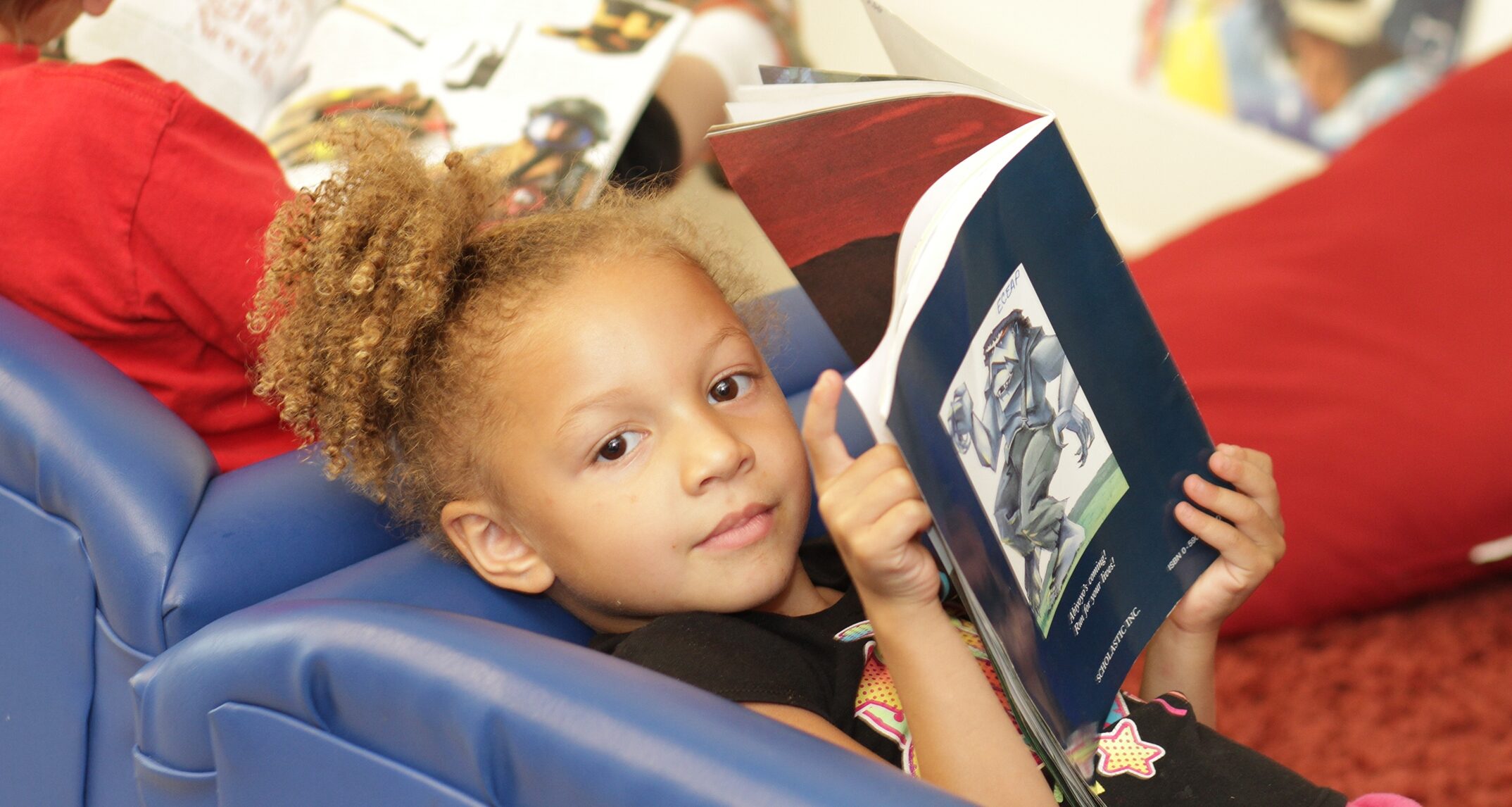
There’s no disputing the impact and importance of early childhood education. Statistics repeatedly show that the highest predictor of lifelong success is early intervention and education. While we all know that early childhood education is crucial to positive lifelong development, where should it occur?
There is a wide range of environments where early childhood education (ECE) is delivered; school districts often provide services to students within their district before kindergarten. Sometimes those preschool rooms are part of a neighborhood elementary school, and sometimes all students are served in a center dedicated to early learning curriculum. These are both school district run programs, so there should be no differences, right? Nope! In fact, there are several differences between early childhood education programs that are embedded within a neighborhood school versus early learning centers, serving only students who are not yet in kindergarten.
Administration and Specialists
In center-based programs, all of the educational and family specialists are focused specifically on the three- to four-year-old age group. Conversely, when early childhood education programs are housed within a neighborhood school, these specialists (someone like an occupational or speech therapist) would need to serve students from age three through 5th or 6th grade. As a result, specialists that work with a much broader age group might not pick up on the nuanced differences between ages that focused professionals in a center-based program can more easily identify.
In addition, the administration, family support specialists and the educators are focused on the specific age group, providing support to the students and families that would be delivered differently at a center versus an early learning center. Typically at a center the early learning program director is on site, where in a neighborhood model they may reside in a central office. Having the administrators and support staff can be beneficial to allow for a more direct connection to the students and families.
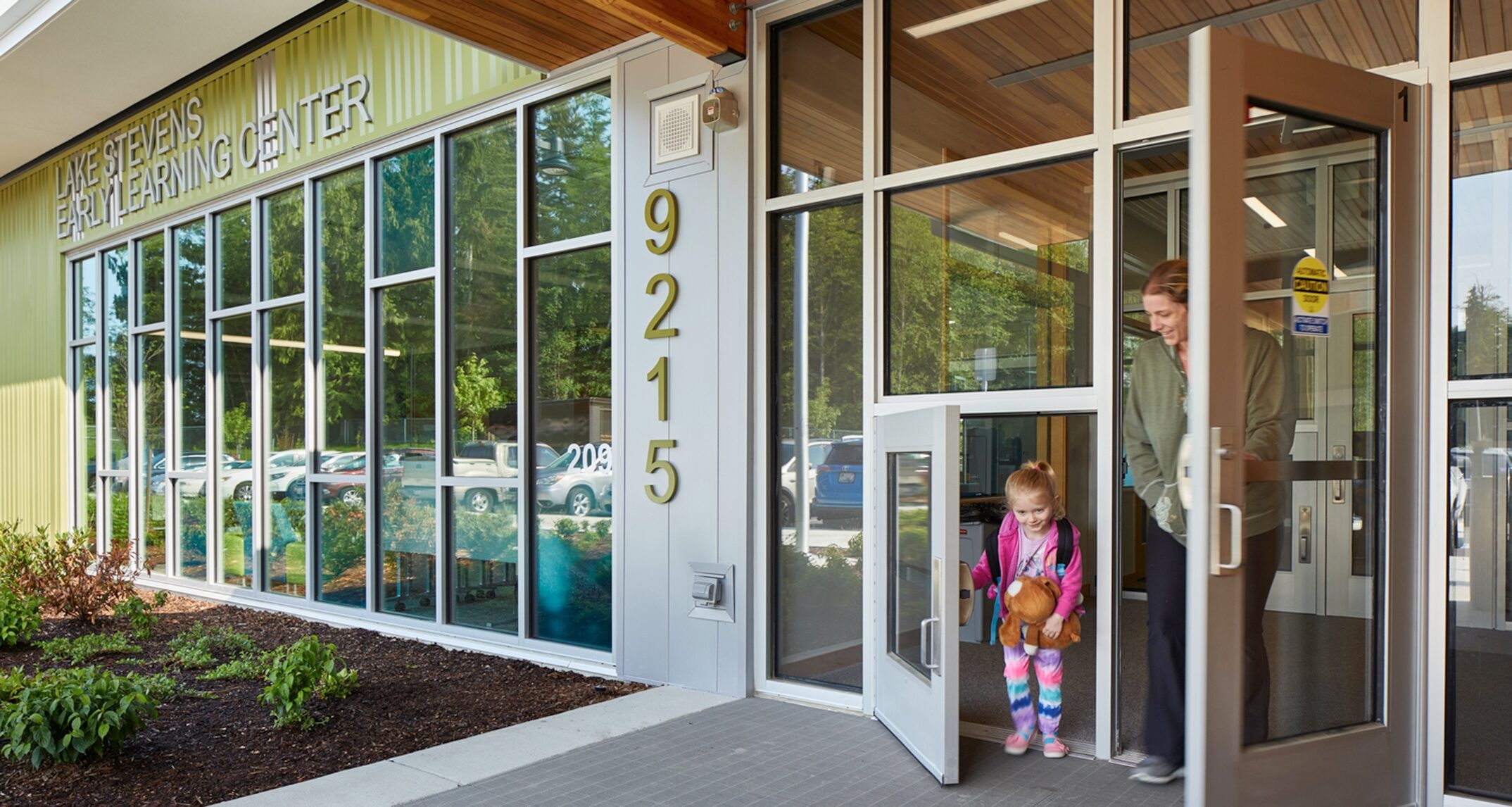
Creating facilities specifically designed for children give students a sense of ownership and excitement, knowing the building has been created just for them. – Lake Stevens Early Learning Center
Educators
In a center based model all the pre-K educators reside within one building allowing for more frequent, spontaneous on curriculum and student behavior collaboration. In a neighborhood model where the teachers are spread out amongst various buildings, collaborative activities occur via phone or email or with specific professional development meetings occurring in an off-site location, frequently away from the students and pre-K classroom spaces. With all the pre-K educators in one location all of the pre-K resources also reside in a single location allowing for greater access to manipulatives and other material to support the curriculum.
Peer Modeling
When pre-K rooms are located within an elementary school there is great opportunity for peer modeling. These younger children are able to observe and model the behavior of other students all the way up to fifth or sixth grade. This also opens up opportunities for older students to assist in the pre-K classrooms, further reinforcing the importance of mentoring and peer modeling. In early learning centers, the lack of older students means modeling/mentoring can only come from fellow classmates or outside visitors.
Behavior
In elementary schools, behavior issues are often resolved by removing the child from the room to avoid disrupting fellow students. In a center model, outbursts are a bit more common than in an elementary school, simply because of the students’ age and emotional development. However, students are not removed from their environment; their behavior is addressed where it happens. At ages three and four, much of their skill building is focused on social and emotional development; it is critical that students learn how to manage themselves and their behavior within a classroom setting.
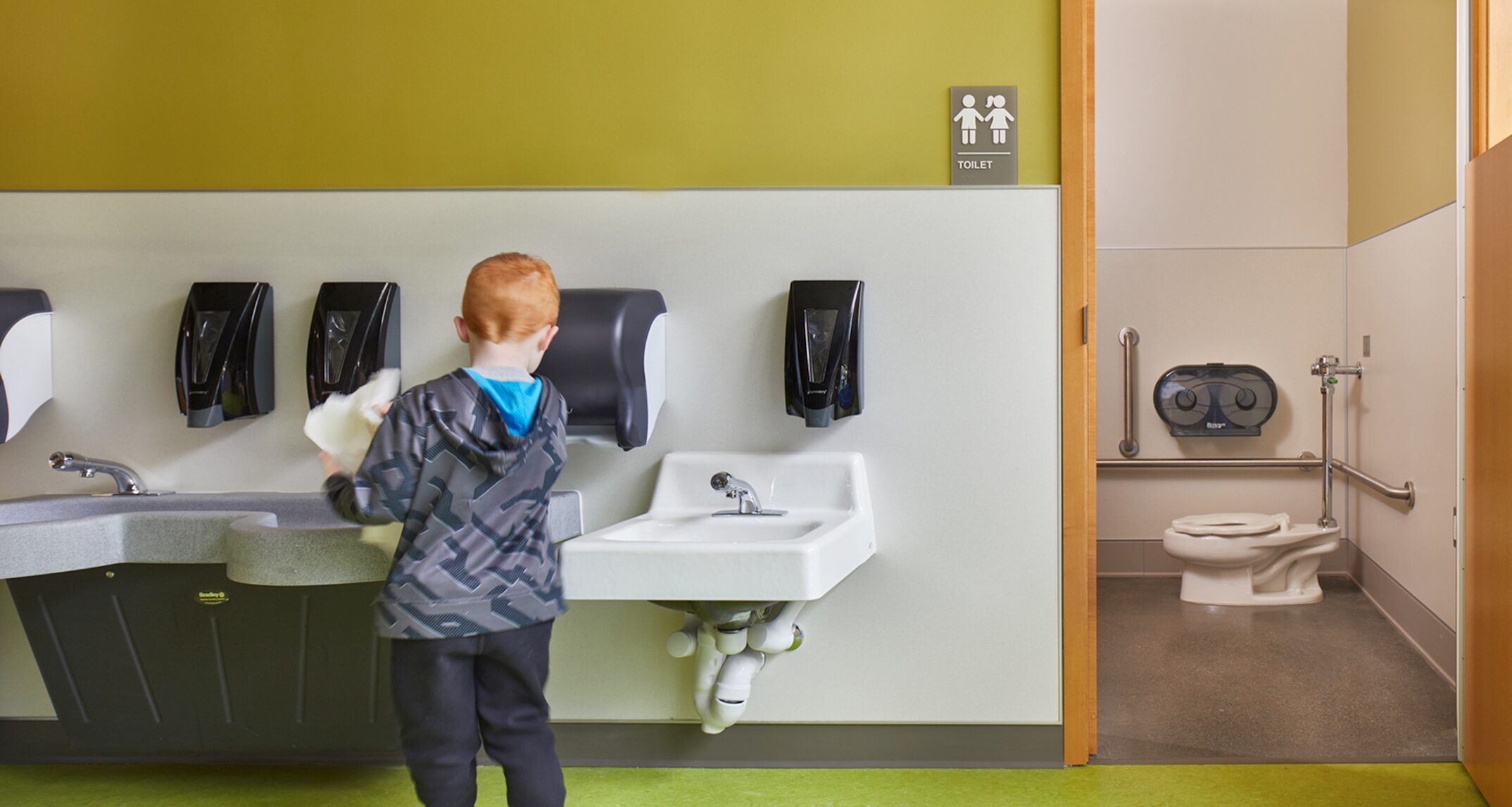
Sinks, toilets, and accessories are specifically designed and mounted to accommodate students ages five and under. – Lake Stevens Early Learning Center
Drop Off/Pick Up
Students under the age of five are always supervised. From the second they leave their parents to the moment they return to their parents, there is always an adult supervising them at both a center and neighborhood school model. The difference is that in the neighborhood model, there are other students who are able to walk independently to/from their parent’s car or the bus, to their classroom, and throughout the school during the day. The impact to the preschool students goes back to the modeling aspect; they have the opportunity in an elementary school to see what good behavior looks like and how to act independently without the direct supervision of adults.
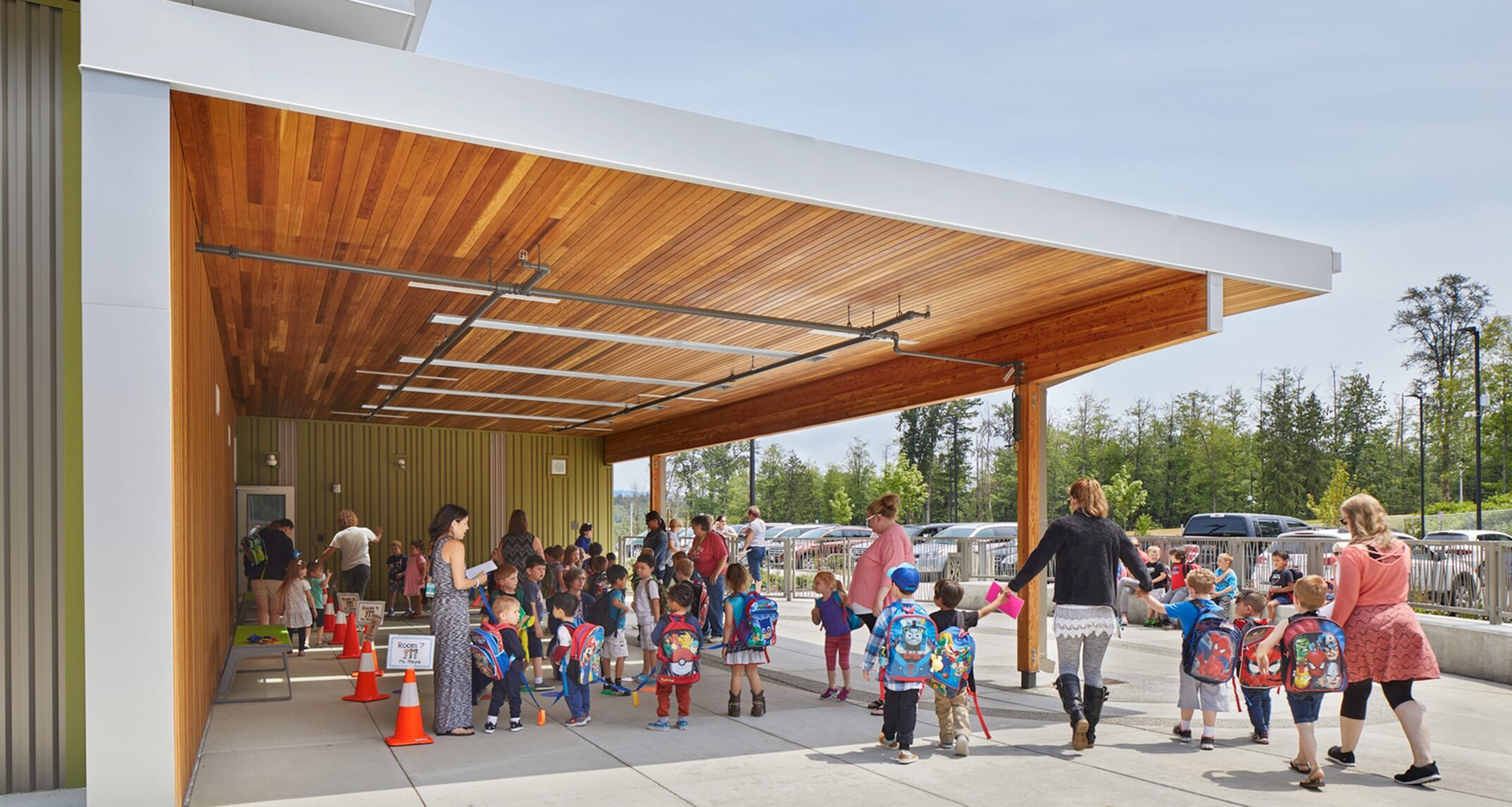
Drop off and pick up can occur in a variety of ways for early learners, but all pre-K students must have adult escorts. Providing queuing space is critical to facilitate student tracking, and allow entering the building in an orderly fashion. – Lake Stevens Early Learning Center
Student Integration
There are typically more classrooms of pre-K students in a center compared to a neighborhood school where there are a few preschool classrooms incorporated within several elementary schools throughout the district. With the larger number of classrooms, there is more opportunity to create the right mix of students and teachers, based on each child’s skill set and developmental levels. With fewer classrooms, the opportunities to mix students to find the best options is more limited.
Pre-K Classroom Design
Classrooms designed specifically pre-K students frequently look different than elementary school classrooms. The sinks, toilets, cubbies, anything the students access regularly are lowered to promote student independence. When the environment is appropriately sized this allows students to accept more responsibility and increase their confidence, a fundamental tenant to early childhood education. Frequently classroom spaces in elementary schools may not be specifically designed to the pre-K students.
Regardless of whether they are located in a center or a neighborhood school, it is important that early learning classrooms maintain very similar if not exact layouts. This facilitates much more seamless integration of students between classrooms. They do not have to wonder where hand washing sinks are, where their cubby is, or where to go to the bathroom. By keeping their locations consistent between classrooms, these become familiar and known entities to the students, which immediately makes them feel more comfortable. Instead of spending energy trying to understand the new room and layout, the student is able to focus on academic learning.
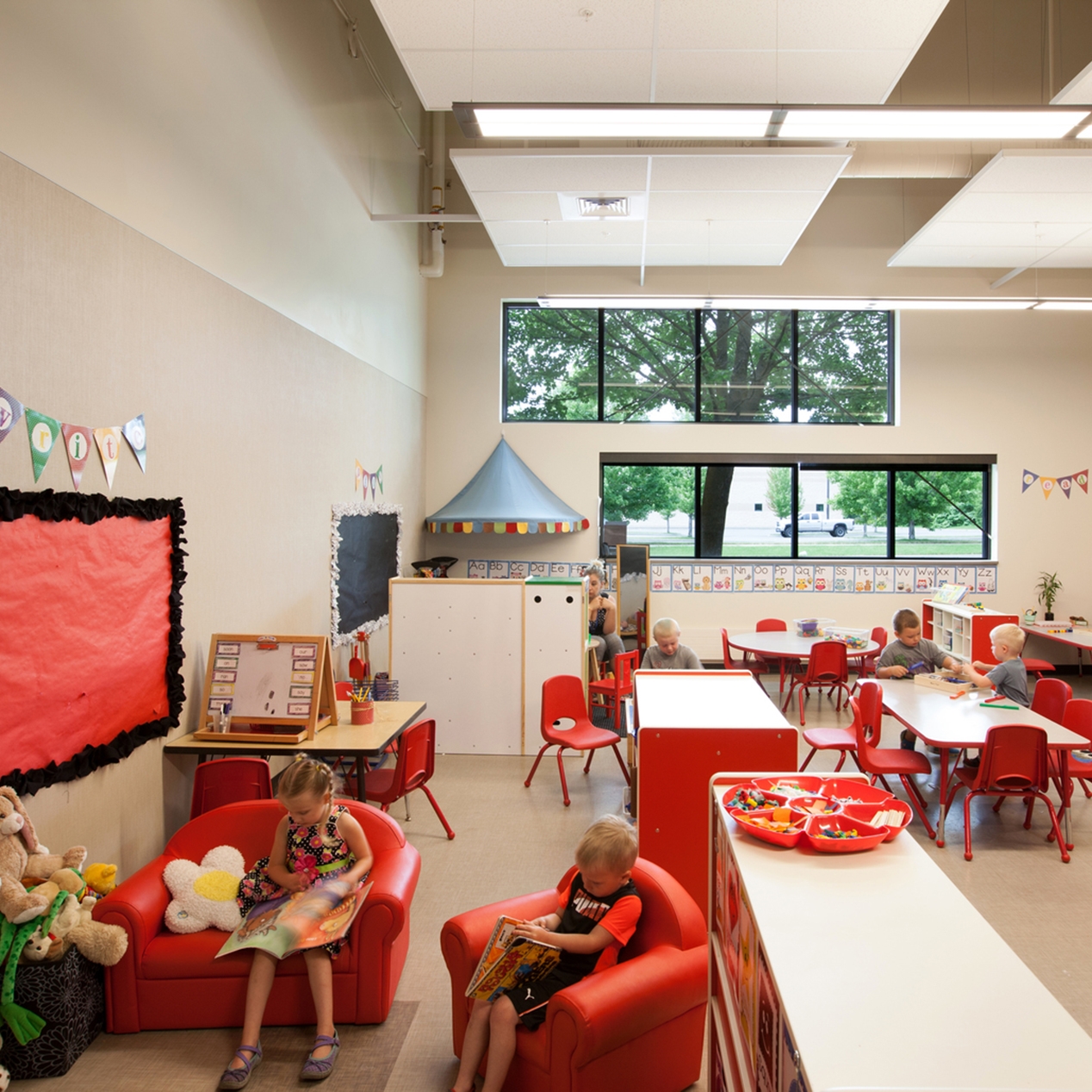
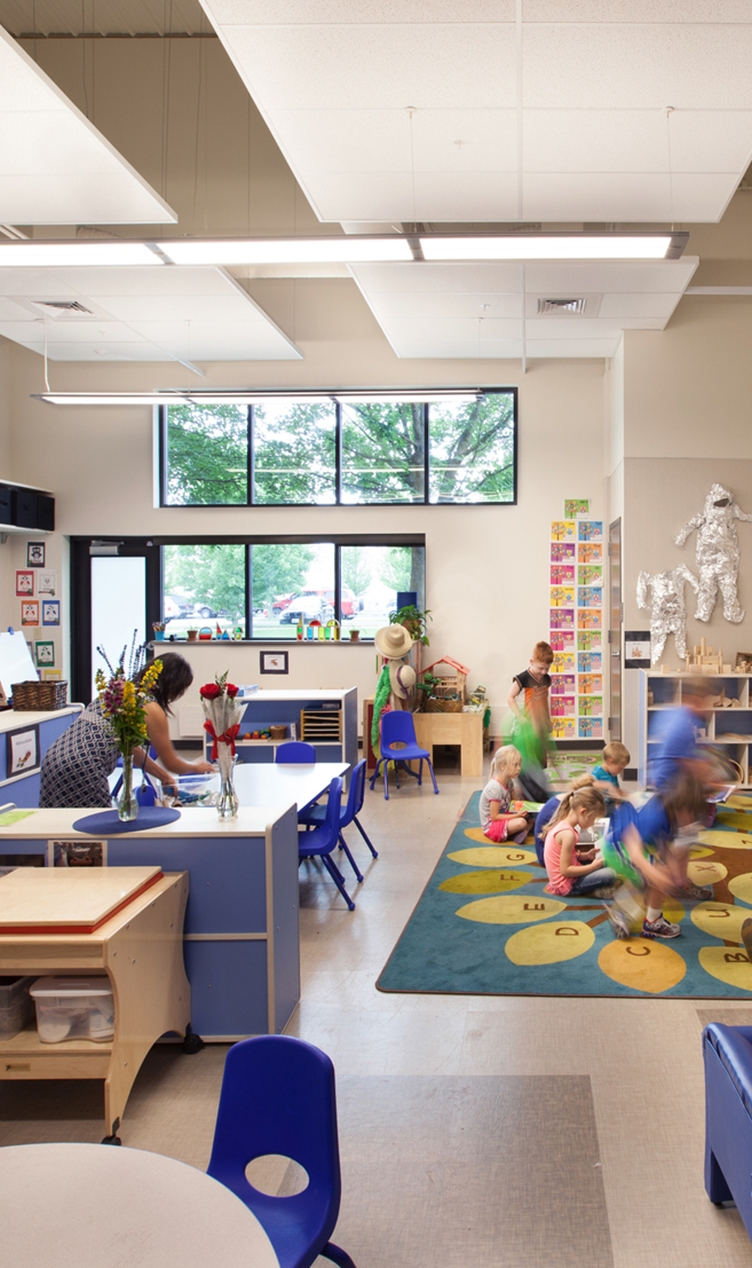
At the Central Valley Early Learning Center, all classrooms have a similar layout and amenities, allowing students to move from room to room with comfort and familiarity.
Playground Impacts
Students at the preschool age need very different active learning opportunities than older elementary school students. Informal, exploration and gross motor focused activities are kids’ work, particularly for preschool students. While all children learn through play and exploration, this is especially important for the younger student. While larger and possibly more formal playground areas for “team” type sports – soccer, baseball, kickball, etc. are appropriate for elementary-age students, the younger, preschool students need different opportunities for play. Trike paths, access to materials, textures, and water are critical to support students. Playgrounds and gyms are most often altered by this difference in age groups. An elementary school gym may have a full basketball and volleyball court, while at the preschool level, there may be multiple smaller rooms, perhaps 2,000-3,000 square feet with more flexibility, that would serve as the indoor play or active learning space for preschool students.
Common Areas
Much of the focus at the preschool level is supporting the entire family. This includes spaces for families to linger before/after the kids are in school to begin to build a community network within the district. For many families, this is their first exposure to formal education, so it is critically important to create “living room” type spaces that are true community rooms. These can occur in a multipurpose type of room in a center model, because it doesn’t need to be as large. It is often challenging to create this type of space in an elementary school, because common areas typically need to serve a much larger student capacity. As a result, these spaces feel less like a warm and welcoming “living room.”
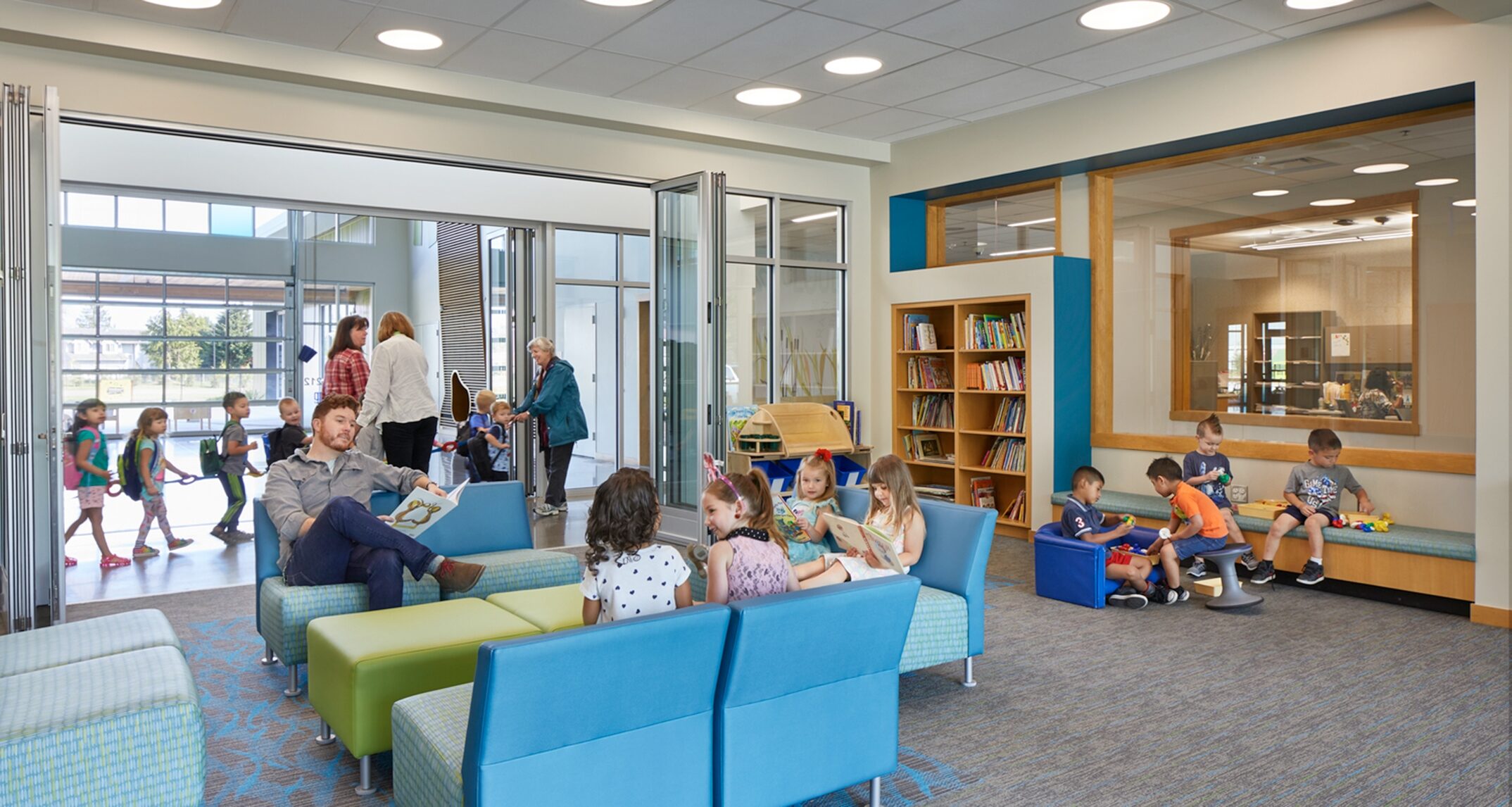
The common entry space in the Lake Stevens Early Learning Center provides a “living room” where students and their families can connect with their school community.
Where students eat is also an important consideration in the spaces that are designed to support the students. Most preschool students eat in their classrooms. This is fundamental to the curriculum at that age group, as children are learning how to eat “family style.” Being able to serve themselves and eat as a group is important to their social and emotional development, but a traditional cafeteria found in an elementary school is less conducive to support this. Since a dedicated cafeteria is not typically needed in an early learning center, the square footage allocated to a cafeteria in a center model could easily be turned into an indoor active play area as well as a family living room.
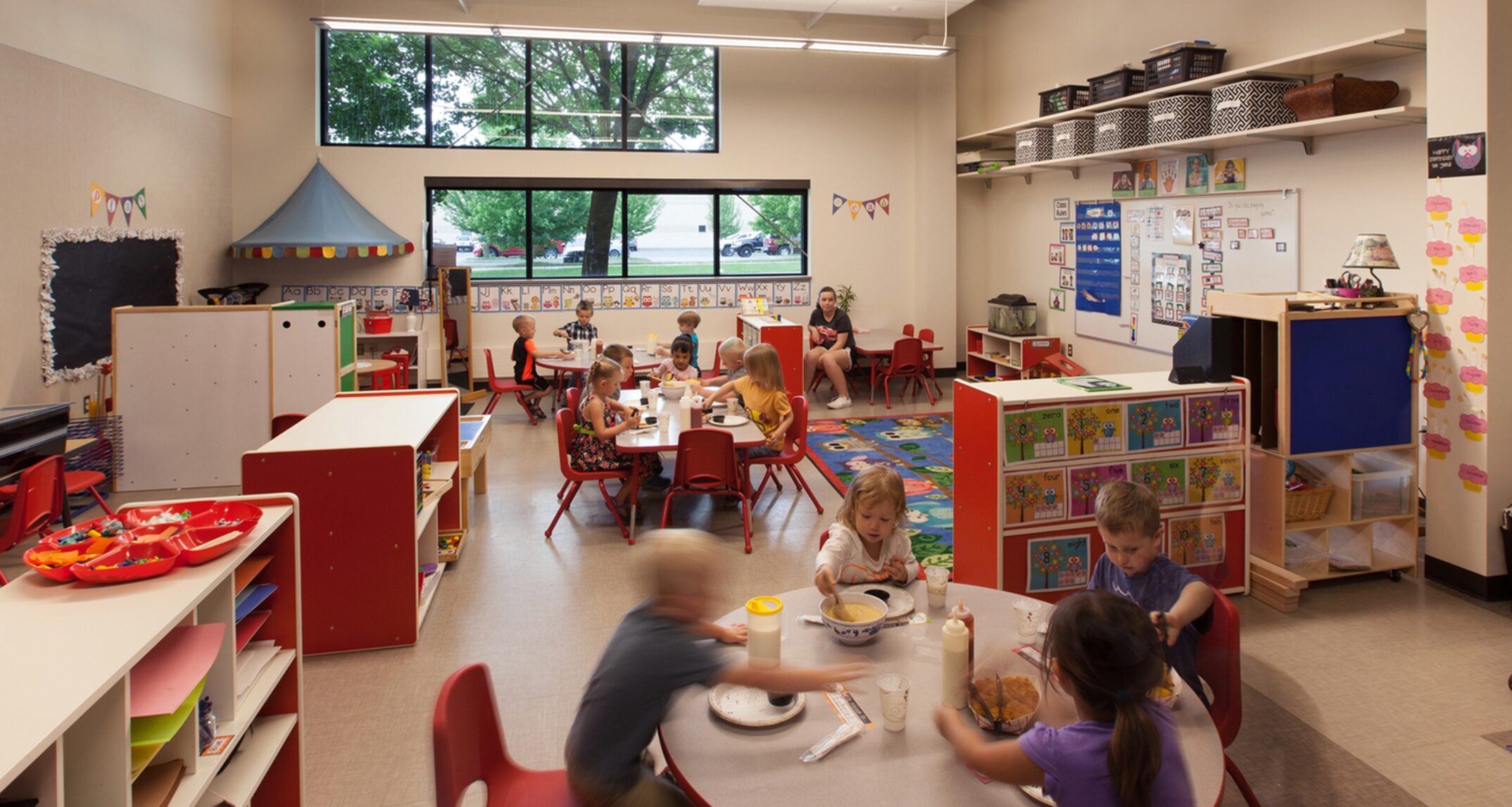
Eating “family style” in the classrooms is fundamentally important for pre-K students’ social and emotional development – Central Valley Early Learning Center
Conclusion
While there are some obvious differentiators between a dedicated early learning center and neighborhood scale model, we recognize that there is also broad variation in both. The hope is that this article begins to identify some items for consideration when determining what type of early learning program to develop within your community. There are pros and cons to both models, but regardless of whether a child attends a center or a neighborhood school, it is critical that they receive early childhood education. High quality early learning is fundamental to building the foundation for a student’s academic, emotional, and social success in life. Simply put: make sure the students get the opportunity to create the strongest foundation possible for themselves, setting them up for lifelong success.
To learn more about the Central Valley Early Learning Center, check out the video below.
